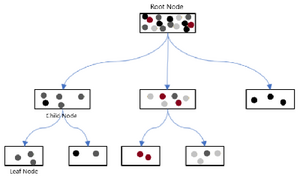Oğuz Koç, M.Sc.
Department of Financial Mathematics
September 2019
Supervisor: A. Sevtap Selçuk-Kestel (Institute of Applied Mathematics, Middle East Technical University, Ankara)
Co-Supervisor: Ömür Uğur (Institute of Applied Mathematics, Middle East Technical University, Ankara)
Abstract
Like other prediction models, credit scoring is a tool used to evaluate the amount of risk associated with applicants or customers. Scoring models identify clients individually as good or bad applicants. They offer statistical odds or probabilities for prediction either the applicant will be default or not in the future. It is beneficial for banks and credit analysts to measure customers' non-payment risk by statistically tested algorithms in many aspects such as reduction in workload and evaluation time. Also, only demanding features that have the most significant impact on credit assessment process in terms of obtaining more explanatory outcomes, emphasizes the benefits mentioned formerly. Today, Machine Learning (ML) algorithms are commonly applied for data analysis in various areas. The algorithms learn how to determine complicated patterns and create smart choices by generating a mathematical model depending on sample dataset without direct programming. In this thesis, a comparative study is performed using Logistic Regression (LR), Support Vector Machine (SVM), Gaussian Naïve Bayes (GNB), Decision Trees (DT), Random Forest (RF), XGBoost (XGB), K-Nearest Neighbors (KNN) and Multilayer Perceptron Neural Network (MLP) algorithms. In addition to these, we strive to achieve more explanatory outcomes in terms of dimensionality with Wrapper Feature Selection (WFS), and investigate its performance in a way of important attributes detection capacity. We also analyze the impact of Grid Search (GS) hyper-parameters optimizing method, and effect of four data transformation techniques Natural Logarithm (LN), Standard, Box-Cox and Min-Max to these algorithms and methods. We compare these cases to determine the most appropriate way for credit classification by considering accuracy, AUC, type I and type II error rates. All measurements are conducted on German and Australian real world consumer credit datasets commonly used in literature.
Keywords: Machine Learning, Credit Classification, German Credit Dataset, Australian Credit Dataset, Data Transformation, Wrapper Feature Selection, Data Mining
